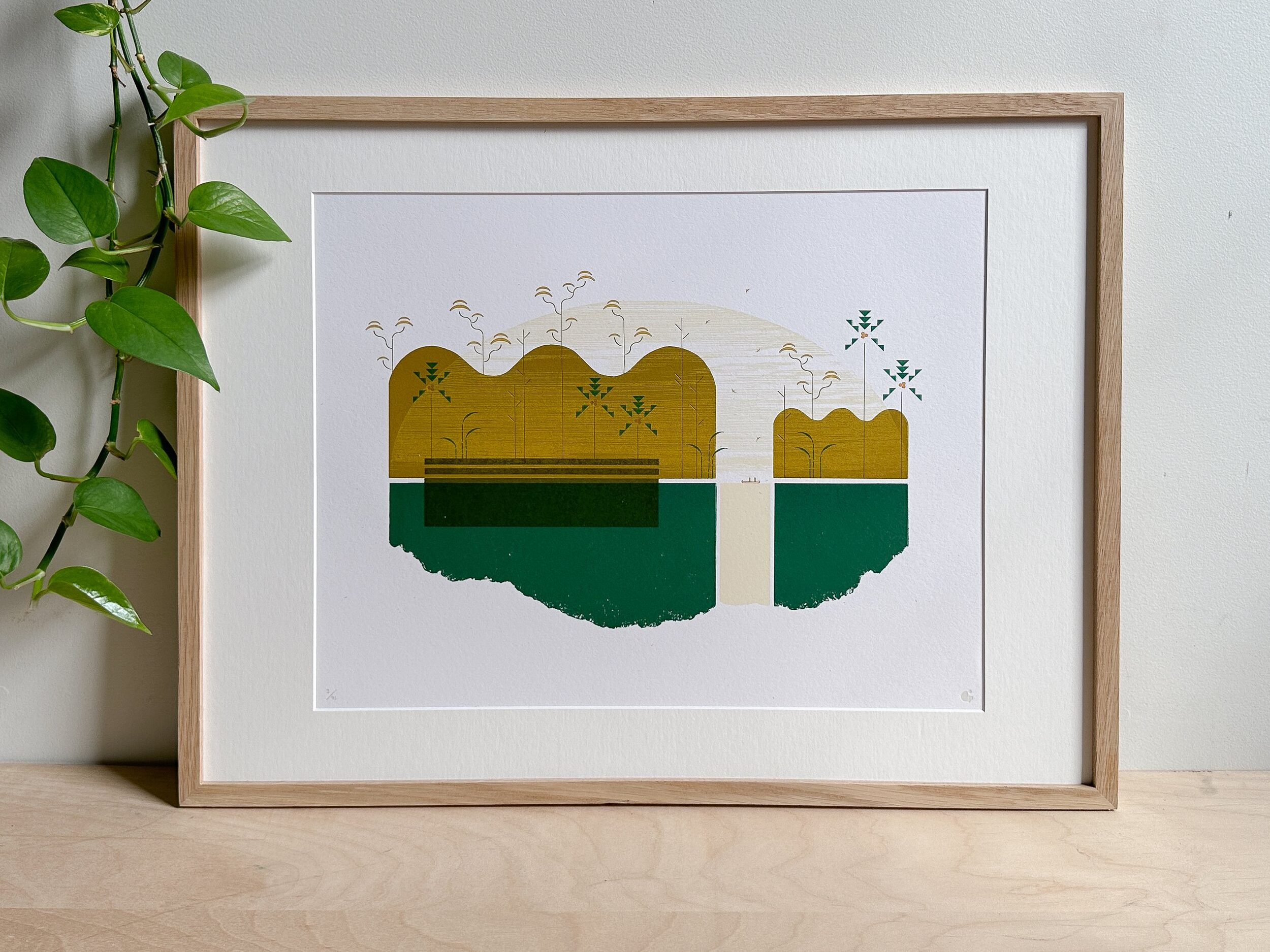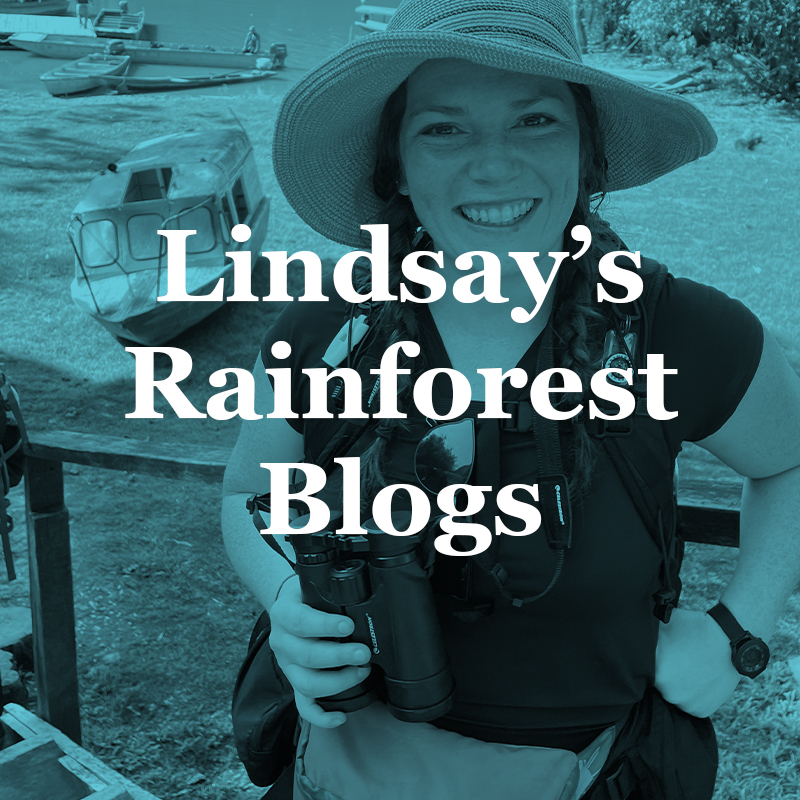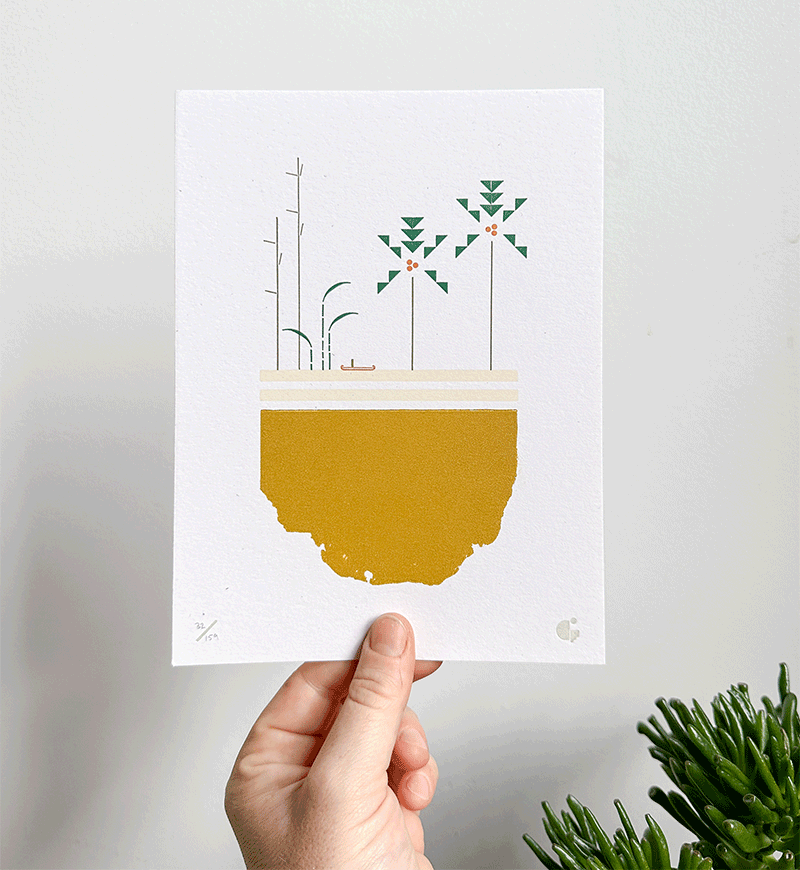Lungs of the Earth was created by
Lindsay Schmittle of Gingerly Press.
Inspired by her time during her ACEER Foundation Artist Residency, a portion of proceeds of every print sold will be donated to the ACEER Foundation.
Prints That Give Back
A portion of proceeds of every print sold will be donated to the ACEER Foundation and designated for the fight against the proposed highway corridor threatening the survival of the Maijuna Indigenous Community.
Shop Now
Artist Statement
These torn tropical landscapes are a part of my Lungs of the Earth Collection about my time spent deep in the Peruvian rainforest for the ACEER Foundation Artist Residency. My goal with this residency has been to create colorful artwork that shares the story of the vulnerable biodiverse rainforest and the Indigenous Maijuna community in their fight against a proposed highway corridor threatening their land and livelihood.
These landscapes share the beauty of the primary rainforest that would be lost from the habitat fragmentation which would occur if the proposed highway corridor were to be built in full, cutting directly through the Maijuna-Kichwa Regional Conservation Area (MKRCA) and titled ancestral lands of the Maijuna. The highway “development corridor” is proposed to be 10 km wide and 130 km long, traveling from the Peruvian city of Iquitos to Colombia. This construction would fragment the forest and open it up to uncontrolled colonization, deforestation and environmental destruction. The MKRCA protects over a million acres of primary rainforest that is a biodiversity hotspot and massive carbon sink vital in the global battle against climate change, and its protection safeguards the cultural identity and physical survival of the vulnerable Indigenous Maijuna who sustainably live off the land.
When habitats are fragmented like this, animal migration paths are severed, creating smaller and smaller isolated islands of native habitat, diminishing the natural resources that support the inhabitants of that area, including the larger mammals of the forest and the Indigenous Peoples who depend on the ecosystem for survival
I illustrated these landscapes as floating islands with a torn bottom edge to represent the tearing apart of the Earth and ecosystem that a 10 km-wide highway corridor would cause. When habitats are fragmented like this, animal migration paths are severed, creating smaller and smaller isolated islands of native habitat, diminishing the natural resources that support the inhabitants of that area, including the larger mammals of the forest and the Indigenous Peoples who depend on the ecosystem for survival, like the Maijuna.
To create this torn effect for the prints, I tore chipboard to the desired shape, then mounted it on ¾” MDF board, carved down around the edge and spray sealed it so ink doesn’t soak in & deteriorate the printing plate. I then raised this plate up to type high (.918”) with paper to be able to print on my Vandercook press.
With these landscapes, I highlight the natural beauty of this thriving ecosystem that would be lost to habitat fragmentation by illustrating a variety of tropical foliage, birds soaring in the canopy and the Maijuna in canoes on the river.
With these landscapes I highlight the natural beauty of this thriving ecosystem that would be lost to habitat fragmentation by illustrating a variety of tropical foliage, birds soaring in the canopy and the Maijuna in canoes on the river. These illustrations are made by hand setting vintage metal ornaments and punctuation. The Maijuna’s canoe is an ornate vintage bracket turned on its side. The canopies of the squiggly trees are bold parenthesis stacked on their sides and the leaves of the understory palm-like-foliage are a lighter weight of parenthesis turned on angles. The line that sits in the canoe representing the Maijuna is a 10 point Bernhard Gothic Heavy capital “I”, and vintage metal ornaments make up the soaring birds in the canopy.

I included the Maijuna boating in canoes in many of these landscapes because the Maijuna are a sustainable part of this natural ecosystem under threat. The Maijuna have lived off the land, fishing, hunting and foraging in this region since time immemorial. However, the construction of this highway corridor threatens their cultural identity and physical survival, as they will be forced to enter the modernized workforce to raise funds to buy food at local markets or they will starve if their sustainable hunting grounds are destroyed and their rivers polluted by development.

Within the 14×18” headliner landscape piece for the collection, titled Lungs Of The Earth, I used my last piece of the palm leaf sheath from the Huacrapona palm (Iriartea deltoidea) that I had collected off the forest floor while in the rainforest. I mounted this sheath to a MDF block to capture its texture as a printing plate. I used the texture of this palm sheath to represent the fresh oxygen and mist that rises from the dense forest as the trees clean the air and store climate warming CO2 in their fibers. The Amazon Rainforest is known as the Lungs of the Earth and one the the largest global carbon sinks for these air filtering abilities within its dense tree-filled forest. This piece illustrates the importance of the Amazon on a global scale and therefore the importance of protecting it from habitat fragmentation and destruction.
A portion of proceeds of every print sold will be donated to the ACEER Foundation and designated for the fight against the proposed highway corridor threatening the survival of the Maijuna Indigenous Community. If you would like to help the Maijuna, the rainforest and help fight climate change, please also consider signing the petition at change.org.
Learn More





